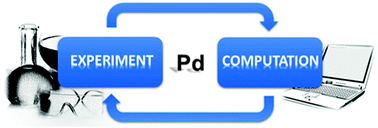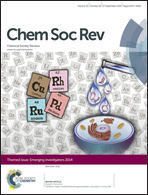Experiment and computation: a combined approach to study the reactivity of palladium complexes in oxidation states 0 to iv
Abstract
As the accuracy of computational chemistry increases, and the advent of more powerful computers decreases the amount of time required to perform complex calculations, the use of this to investigate chemical systems becomes increasingly attractive. Particularly in combination with practical lab-based experimental and spectroscopic studies the application of in silico studies is a powerful tool for mechanistic investigations. In this review we demonstrate how a combined experimental and computational approach can yield mechanistic insight that could frequently not have been accessible to this high degree of certainty by utilising one of these two approaches alone. After an introduction describing the challenges of studying palladium-based chemistry, and how this combined approach can help to tackle these challenges (Section 1), we provide examples in which experiments have been used in tandem with computational chemistry. This discussion is categorised by palladium oxidation state for convenience: Pd(0) chemistry comprises discussion on oxidative addition in traditional Pd(0)/Pd(II) cross-coupling (Section 2); a section on odd oxidation state chemistry includes oxidation of Pd(0) to Pd(I) dimers, oxidative addition to Pd(I) dimers, oxidation of Pd(II) to Pd(III) dimers and subsequently reductive elimination from these Pd(III) dimers (Section 3); Pd(II) chemistry includes transmetallation, reductive elimination and the field of C–H activation relating to palladium catalysis (Section 4); and finally, a section on Pd(IV) chemistry focusses on reductive elimination from these complexes (Section 5).

- This article is part of the themed collection: Chem Soc Rev Emerging Investigators

 Please wait while we load your content...
Please wait while we load your content...